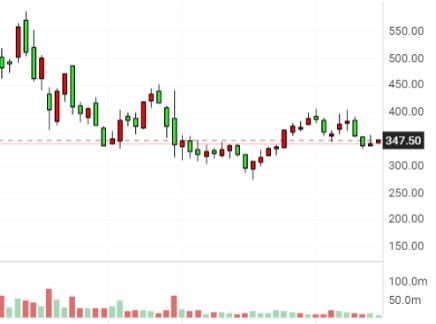Americans are no longer afraid of the "new crown"? Not only Zoom, but the concept of "magic" at home has faded away

Speaking of the biggest beneficiaries of the epidemic, I have to mention the video conferencing service provider Zoom and Wall Street investors. No one does not know this stock-the famous Zoom video communication (NASDAQ: ZM) has been since the outbreak of the epidemic last year. On Wall Street, not only did its stock price soar by 400%, it even brought a huge amount of oolong trading to another stock of the same name.
However, after entering 2021, with the promotion of vaccines, Zoom's stock price gains have ceased, and the prestige is no longer there. After the US stock market on Monday, the company announced its second-quarter results that exceeded market expectations, but its stock price still plummeted by more than 12% during the after-hours trading hours.
According to financial report data, Zoom's net profit in the second quarter was US$316.9 million, and earnings per share were about US$1.04, compared with US$185.6 million in the same period last year, and earnings per share were only US$0.63. In addition, the company's revenue increased by 54% to 1.02 billion U.S. dollars, higher than the previous analysts' expectations of 991.2 million U.S. dollars.
In the conference call, Zoom’s CFO Kelly Steckelberg said that this is the first time Zoom has reached $1 billion in revenue, but the company’s growth will begin to "normalize" and there will be no unprecedented increase. Earnings per share for the third quarter are expected to be US$107-108 million, and revenues are expected to be US$1.02 billion, which is the same as market analysts’ expectations. In addition, the company expects earnings per share for the entire fiscal year to be US$4.75-4.79. Revenue is expected For 4.01 billion U.S. dollars. Analysts had expected the company's full-year revenue growth to slow to 51% from 326% last year.
Kelly Steckelberg pointed out that at the end of the second quarter, the company had about 500,000 customers and more than 10 employees, accounting for about 64% of the total. She added that as small customers adapt to the changing epidemic environment, the next few months will be an unfavorable development factor for the company's online sales, because many companies buy services online on a monthly basis.
Some Zoom fans may think that the epidemic has not completely passed, many people are still working from home, and the company has also transferred some positions to permanent home working positions, which means that this part of Zoom users will still become permanent customers.
The Royal Bank of Canada analyst Rishi Jaluria wrote in the report that investors must pay attention to Zoom’s “churn rate”. Management has been emphasizing that the increased customer churn rate during the epidemic may be higher than historical levels, but so far , The performance of this part of the attrition rate is acceptable, still lower than market expectations. The analyst gave Zoom a "buy" rating with a target price of $450, and there is still more than 30% upside from the current stock price.
Next, it is worth thinking about why the delta virus is still raging in many countries in Europe and America, but the stock prices of many "home-concept stocks" including Zoom have begun to be under severe pressure?
With the exception of Zoom, many "home-concept stocks" that have reaped benefits from the epidemic are far from as smooth as before. When vaccines become popular and society restarts, the products and services of these companies seem to be no longer "essentials."
Among them, because people no longer need to hoard a large amount of food and the supply chain crisis has led to rising costs, Campbell Soup (NYSE: CPB)’s stock price has fallen 15% this year; Peloton Interactive Inc (NASDAQ, which provides services for people to exercise at home) :PTON) also encountered "Waterloo" when it announced its financial report last week; in addition, the game company Take-Two Interactive Software Inc (NASDAQ:TTWO) also experienced rapid growth in the epidemic, but its performance expectations announced in early August The lower than market expectations also reminded investors that the stock price of the stock has fallen by 24% this year.
So far, most Americans have actually adapted to the epidemic, and the government has not taken the heavy measures to block the economy as it did in the early stages of the epidemic. The U.S. government now values the promotion of vaccination rather than blockade the economy. Therefore, the economy has not experienced much turbulence.
Data show that Americans did not panic too much in the face of the delta mutant strain, and the economic restart process was not greatly affected. Since the outbreak of the new epidemic in July, the U.S. economy has continued to grow rapidly. Compared with a year ago, the number of people flying, driving, and traveling has increased significantly, and they are still spending money. At the same time, companies are also expanding recruitment, with a shortage of millions of people.
In the market outlook, "home concept stocks" are still under pressure to return to normalization of performance development, and investors need to pay attention to the risk of fluctuations in individual stock prices.



